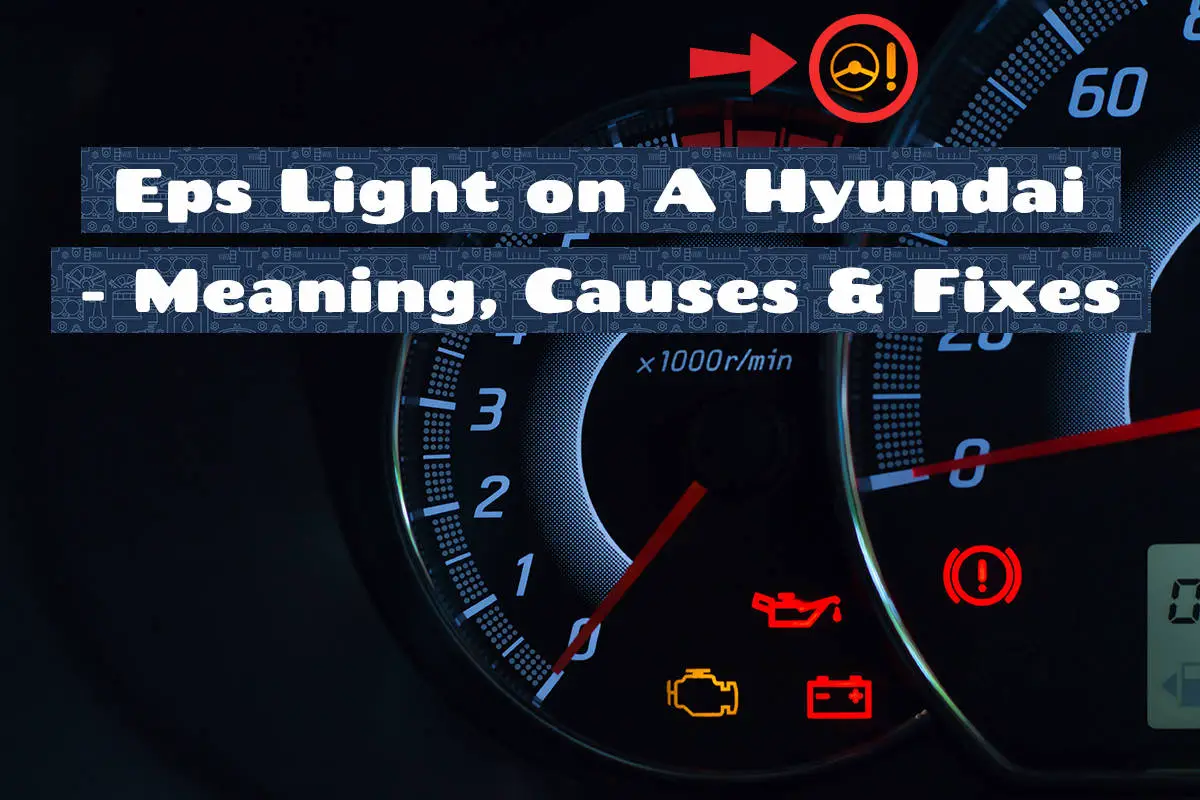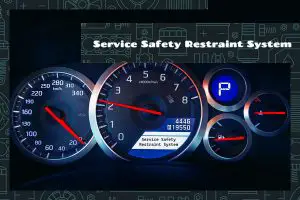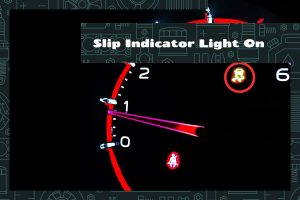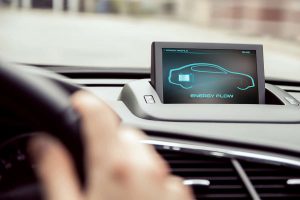If you drive a Hyundai, or any modern car for that matter, you will notice warning lights and symbols that may appear on the dashboard. One of these warning lights is the EPS (Electronic Power Steering) light. It’s part of a system that uses computerized controls that makes steering the car easier.
The EPS light on a Hyundai indicates a problem with the Electronic Power Steering system. Symptoms may include difficulty in steering. Fixing the problem may involve checking electrical connections, and alignment, or consulting a professional mechanic.
This article will delve into the meaning, causes, and solutions related to the EPS light in a Hyundai.
EPS Light Meaning

The EPS (Electronic Power Steering) light acts as a monitor for the power steering system. This system assists the driver in steering the vehicle with minimal effort.
Importance of EPS in Hyundai
EPS has become a standard feature in modern Hyundai vehicles. Unlike traditional hydraulic steering systems, EPS does not rely on fluid pressure but uses electric motors to aid in steering. This makes the steering smoother and more responsive while driving. It also offers fuel efficiency benefits as it only draws power when needed.
The EPS light on the dashboard acts as a warning signal. When everything is operating correctly, the light remains off. However, if there is a malfunction within the system, the EPS light will illuminate, prompting the driver to take action.
What Does the EPS Light Indicate?
The EPS light on a Hyundai vehicle indicates a specific issue related to the Electronic Power Steering system. If this light turns on while driving, it’s a sign that the computerized system controlling the power steering has detected a malfunction.
Causes of EPS Light Activation
The activation of the RPS light on your Hyundai vehicle’s dashboard is a signal that something might be wrong with the steering system. Here are the likeliest causes of this:
1. Sensor Malfunctions
- Steering Angle Sensor Issues: If this sensor, which determines the steering wheel’s direction, malfunctions, it can activate the EPS light.
- Problems with the Torque Sensor: This sensor gauges the steering force applied by the driver. A failure here can disrupt the entire system.
- Speed Sensor Malfunction: This sensor helps in adjusting steering assistance based on the car’s speed, and any errors can hinder the system.
2. Electrical and Wiring Failures
- Damaged Wiring: Broken or frayed wires can disrupt the flow of electricity, affecting the system’s function.
- Corroded Connectors: Corrosion in the connections can hinder electrical flow, causing the EPS light to turn on.
- Fuse Issues: If a fuse blows in the EPS circuit, it can disable the system entirely.
3. Steering Component Wear and Tear
- Bearing Degradation: Worn-out bearings can cause friction in the steering column, impacting its smooth operation.
- Rack and Pinion Damage: These essential components must be in good condition to ensure proper steering response.
- Hydraulic System Leakage: Leaks in the hydraulic system (if applicable) can diminish steering efficiency.
4. Software and Calibration Errors
- Outdated Software: Using an old version can cause inconsistencies within the system.
- Improper Calibration: Incorrect calibration can lead to poor steering response, triggering the warning light.
5. Power Supply Issues
- Weak Battery: If the battery fails to supply adequate power, the system may falter.
- Alternator Failures: Issues with the alternator can cause power inconsistencies.
- Voltage Fluctuations: Sudden changes in voltage can unbalance the system.
Effects on Hyundai Vehicles
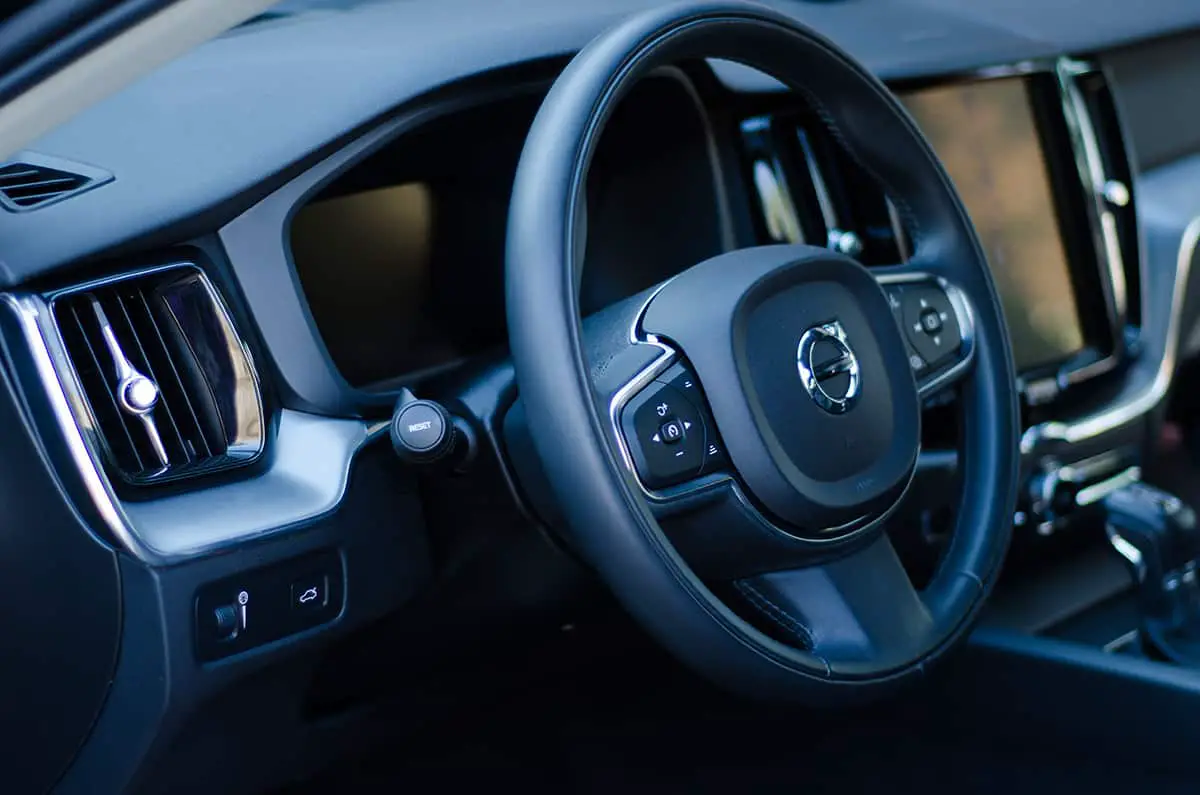
While the EPS dashboard light may be annoying, there are real safety concerns that are associated with this warning light.
1. Impact on Steering Control
When the EPS light illuminates, it may signal a malfunction within the steering system. This can result in a loss of power steering, making the steering wheel feel heavier and harder to turn. The effects on steering control can range from minor inconveniences to significant challenges in maneuvering the car, especially at low speeds.
In severe cases, the loss of power steering may cause the driver to exert extra effort to turn the wheel, leading to fatigue and potentially compromising driving safety.
2. Effects on Vehicle Safety
Activating the EPS light in Hyundai cars might signal a reduction in steering assistance, directly impacting vehicle safety. Any inconsistency in steering response can lead to difficulties in maintaining lane discipline, avoiding obstacles, or even turning at intersections.
The failure of sensors, wiring, or other essential components within the steering system may put the occupants at risk, particularly in emergency situations requiring rapid steering actions.
3. Influence on Fuel Efficiency
When a malfunction occurs, the system may fail to optimize the power consumed by the steering, leading to reduced fuel efficiency. This effect might not be immediately noticeable but can add up over time, increasing fuel costs.
Fixes and Solutions
Even though the EPS warning light is a major cause for concern, you can try a few things to resolve the issue.
Resetting the EPS System
If the EPS light activates, it might simply be a temporary glitch that can be resolved by resetting the system. Here are step-by-step instructions for this easy fix:
- Turn Off the Vehicle: Switch off the engine and remove the key from the ignition.
- Wait a Few Minutes: Allow the car to sit for a few minutes to reset the electronic systems.
- Restart the Vehicle: Turn the ignition back on and check if the EPS light has turned off.
Inspecting the Power Steering Fluid
Sometimes, the issue might be related to the power steering fluid. Follow these steps to inspect and possibly resolve the problem:
- Locate the Power Steering Fluid Reservoir: Check the vehicle’s manual to find the reservoir.
- Inspect the Fluid Level: If the fluid is below the required level, it may cause the EPS light to activate.
- Refill if Necessary: Use the recommended power steering fluid for Hyundai vehicles to refill to the proper level.
- Check for Leaks: If the fluid level is low, inspect for leaks in the hoses and connections.
Examining Wiring and Connections
Faulty wiring or loose connections may trigger the EPS light. Follow these steps to examine them:
- Turn Off the Vehicle: Safety first. Switch off the engine.
- Inspect the Connections: Look at the connections to the power steering motor and sensors.
- Check for Damages: Look for any frayed or damaged wiring.
- Tighten Loose Connections: If any connections are loose, secure them.
Professional Diagnosis and Repair
Some EPS problems might be beyond the scope of a DIY fix. In these cases, professional diagnosis and repair are your only options.
Hyundai dealerships or certified mechanics with experience in Hyundai vehicles are your best options in these situations. They can perform a comprehensive examination of the steering system, including the EPS module, sensors, and other components.
FAQs
1. Can I still drive if the EPS light comes on?
Yes, you can, but this is only advisable during emergencies (i.e., to pull over). The EPS light indicates a problem with the electronic power steering system. While the vehicle might still be drivable, the steering could become more difficult, especially at lower speeds.
2. Is it expensive to fix the EPS system?
The cost of fixing the EPS system in a Hyundai can vary widely, depending on the underlying cause of the problem. Simple issues like resetting the system or refilling power steering fluid might be inexpensive or even free if you do it yourself.
However, if the problem is more complex, such as a damaged EPS module or faulty wiring, the repair cost can range from a few hundred to over a thousand dollars.
